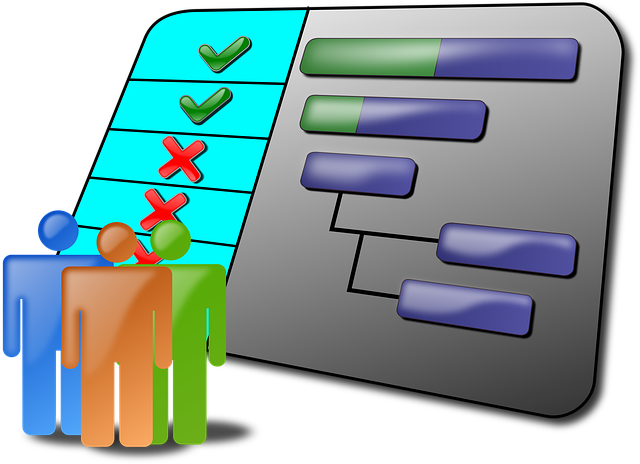AI chatbot solutions leverage data collection and advanced training methods, utilizing NLP and ML to learn from vast datasets. Machine Learning Algorithms drive their evolution, enabling pattern recognition, prediction, and response refinement over time. Continuous learning from user interactions enhances context awareness, intent recognition, and entity extraction. Feedback integration adjusts language, tone, and understanding of user intent for improved experiences in marketing and e-commerce automation. Key strategies include reinforcement learning and NLP for sophisticated, human-like interactions that drive business growth through effective AI chatbot solutions.
AI Chatbots are revolutionizing customer engagement, learning and improving with each interaction. This evolution is driven by sophisticated data collection, training methods, and advanced machine learning algorithms. From understanding natural language nuances to incorporating user feedback, these AI chatbot solutions continuously adapt. Enhanced NLP enables more accurate interpretations, while feedback loops facilitate adjustments for better performance. Through continuous learning and adaptation strategies, chatbots evolve, providing improved user experiences over time.
- Data Collection and Training Methods
- Machine Learning Algorithms in Action
- Natural Language Processing Enhancements
- User Feedback Loops and Adjustments
- Continuous Learning and Adaptation Strategies
Data Collection and Training Methods

AI chatbots learn and evolve through a meticulous process of data collection and training methods. These chatbots are trained on vast datasets comprising diverse text corpora, including books, articles, and online content. The goal is to expose them to as much textual information as possible to understand human language nuances. Advanced ai automation agencies employ sophisticated techniques like natural language processing (NLP) and machine learning (ML) algorithms to process this data effectively.
The training process involves feeding these datasets into the chatbot’s neural networks, allowing it to learn patterns, acquire knowledge, and improve its ability to generate contextually relevant responses. Over time, as more data is collected and processed, ai chatbot solutions become adept at handling varied user queries, making them increasingly effective and efficient in their operations. This continuous learning process ensures that the AI assistant can adapt and improve, providing better and more accurate information to users.
Machine Learning Algorithms in Action

Machine Learning Algorithms play a pivotal role in how AI Chatbots evolve and enhance their capabilities over time. These algorithms, at the heart of AI chatbot solutions, enable bots to learn from vast datasets, identifying patterns and making predictions based on that knowledge. Each interaction serves as a learning opportunity for the AI agent, allowing it to refine its responses and improve accuracy.
For instance, a sales chatbot leveraging Machine Learning can analyze past customer interactions to grasp common queries and preferences. Over time, this leads to more personalized and relevant responses, enhancing user satisfaction. The AI agent becomes adept at understanding nuances in human language, contextual cues, and even sentiment, making its communication more natural and effective.
Natural Language Processing Enhancements

As AI chatbots evolve, advancements in Natural Language Processing (NLP) play a pivotal role in enhancing their capabilities. NLP is the backbone that enables chatbots to understand and interpret human language, allowing them to engage in more meaningful conversations. With each interaction, these ai chatbot solutions learn from user inputs, refining their responses over time. This continuous learning process involves improving context awareness, intent recognition, and entity extraction, making interactions with the ai assistant more natural and accurate.
AI automation agencies focus on developing sophisticated NLP algorithms that power modern ai chatbot applications. By leveraging machine learning techniques, these agencies train chatbots to adapt to diverse user queries, ensuring they provide relevant and up-to-date information. This adaptability is crucial for maintaining user satisfaction and fostering long-term engagement with the AI chatbot, making it an indispensable tool in today’s fast-paced digital landscape.
User Feedback Loops and Adjustments

AI chatbots learn and evolve through user interactions, relying heavily on feedback loops to refine their responses and improve performance over time. When a user engages with an AI chatbot, their satisfaction level—measured through explicit ratings or implicit behavior—serves as valuable data. Developers integrate this feedback into sophisticated algorithms that adjust the chatbot’s learning parameters, allowing it to adapt its language, tone, and understanding of user intent.
These adjustments are particularly crucial in chatbot marketing and ecommerce automation applications. For instance, in a customer service setting, positive user experiences can be reinforced by refining the chatbot’s ability to handle specific queries or resolve issues. Conversely, negative feedback triggers a backtracking process where developers fine-tune the AI chatbot solutions to better anticipate and address customer needs, ensuring a more seamless and satisfying interaction each time.
Continuous Learning and Adaptation Strategies

AI Chatbots are designed to continuously learn and adapt, which is a cornerstone of their effectiveness as solutions in various industries. They employ sophisticated algorithms that analyze vast amounts of data from user interactions, enabling them to refine their responses and improve accuracy over time. This continuous learning process involves several strategies. One common approach is reinforcement learning, where the chatbot receives feedback based on user responses, adjusting its output accordingly. Additionally, they can leverage natural language processing (NLP) techniques to understand context, nuances, and user intent better, leading to more relevant and accurate answers.
As chatbots interact with more users through different channels like websites, mobile apps, or messaging platforms, they collect diverse data, which enriches their knowledge base. This allows them to evolve their chatbot marketing strategies and personalizing interactions, ensuring a more engaging and effective ai workflow. By continuously refining their models based on real-world data, AI Chatbots can deliver increasingly sophisticated and human-like responses, enhancing user experiences and driving business growth.
AI chatbots have evolved significantly, leveraging data-driven approaches and sophisticated machine learning algorithms. From initial training using diverse datasets to continuous learning through user feedback loops, these bots are constantly refining their responses and understanding of natural language. As technology advances, AI chatbot solutions will become even more adept at handling complex queries, ensuring better user experiences across various applications.
